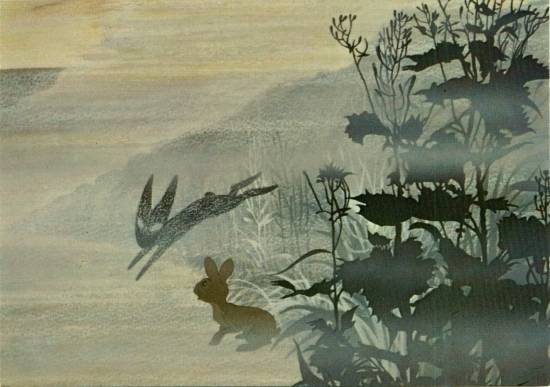See the details below for information about two Post Doctoral Research positions and one
Research Assistant position available for a major children's book
project in Dublin, Ireland.
Post Title: Postdoctoral Researcher, The National Collection of Children’s Books Project x 2 (Trinity College Dublin and the Church of Ireland College of Education)
Post Status: 22-month contract, Full-time
Department/Faculty: School of English, Trinity College Dublin
Location: School of English
Salary: €40,885 per annum
Closing Date: 12 Noon on Thursday, 9th January 2014
Contact email: whytepa@tcd.ie
Post Summary:
This collaborative project between the School of English, Trinity College Dublin, and the Church of Ireland College of Education will detail the content of named collections (while also referring to print and archival materials) in Trinity College, the National Library of Ireland, The Church of Ireland College of Education, St Patrick’s College, Drumcondra (DCU), Pearse Street Library and others.
Applications are invited for two postdoctoral research positions as part of a two-year interdisciplinary and inter-institutional project, funded by the Irish Research Council, which will examine children’s book collections, in the English language, in the city of Dublin. The project, which will establish Dublin as the world-centre for children’s literature research, also represents the beginning of The National Collection of Children’s Books. The project is also supported by the Trinity Long Room Hub. The successful candidates will be expected to take up the posts on 1 February 2014.
********
Post Title: Research Assistant, The National Collection of Children’s Books Project (Trinity College Dublin and the Church of Ireland College of Education)
Post Status: 22-month Specific Purpose Contract, Full-time
Department/Faculty: School of English, Trinity College Dublin
Location: School of English (and libraries and institutions listed below)
Reports: Dr Pádraic Whyte (TCD) and Dr Keith O’Sullivan (CICE) – Principal Investigators
Salary: €25,712 per annum
Closing Date: 12 Noon on Thursday, 9th January 2014
Contact email: nccb@tcd.ie
Post Summary
This collaborative project between the School of English, Trinity College Dublin, and the Church of Ireland College of Education will detail the content of named collections (while also referring to print and archival materials) in Trinity College, the National Library of Ireland, The Church of Ireland College of Education, St Patrick’s College, Drumcondra (DCU), Pearse Street Library and others.
Applications are invited for a research assistant as part of a two-year interdisciplinary and inter-institutional project, funded by the Irish Research Council, which will examine children’s book collections, in the English language, in the city of Dublin. The project, which will establish Dublin as the world-centre for children’s literature research, also represents the beginning of The National Collection of Children’s Books. The project is also supported by the Trinity Long Room Hub. The successful candidate will be expected to take up the post on 1 February 2014.
For further details and to apply for a position, please access this link: https://jobs.tcd.ie/
Post Title: Postdoctoral Researcher, The National Collection of Children’s Books Project x 2 (Trinity College Dublin and the Church of Ireland College of Education)
Post Status: 22-month contract, Full-time
Department/Faculty: School of English, Trinity College Dublin
Location: School of English
Salary: €40,885 per annum
Closing Date: 12 Noon on Thursday, 9th January 2014
Contact email: whytepa@tcd.ie
Post Summary:
This collaborative project between the School of English, Trinity College Dublin, and the Church of Ireland College of Education will detail the content of named collections (while also referring to print and archival materials) in Trinity College, the National Library of Ireland, The Church of Ireland College of Education, St Patrick’s College, Drumcondra (DCU), Pearse Street Library and others.
Applications are invited for two postdoctoral research positions as part of a two-year interdisciplinary and inter-institutional project, funded by the Irish Research Council, which will examine children’s book collections, in the English language, in the city of Dublin. The project, which will establish Dublin as the world-centre for children’s literature research, also represents the beginning of The National Collection of Children’s Books. The project is also supported by the Trinity Long Room Hub. The successful candidates will be expected to take up the posts on 1 February 2014.
********
Post Title: Research Assistant, The National Collection of Children’s Books Project (Trinity College Dublin and the Church of Ireland College of Education)
Post Status: 22-month Specific Purpose Contract, Full-time
Department/Faculty: School of English, Trinity College Dublin
Location: School of English (and libraries and institutions listed below)
Reports: Dr Pádraic Whyte (TCD) and Dr Keith O’Sullivan (CICE) – Principal Investigators
Salary: €25,712 per annum
Closing Date: 12 Noon on Thursday, 9th January 2014
Contact email: nccb@tcd.ie
Post Summary
This collaborative project between the School of English, Trinity College Dublin, and the Church of Ireland College of Education will detail the content of named collections (while also referring to print and archival materials) in Trinity College, the National Library of Ireland, The Church of Ireland College of Education, St Patrick’s College, Drumcondra (DCU), Pearse Street Library and others.
Applications are invited for a research assistant as part of a two-year interdisciplinary and inter-institutional project, funded by the Irish Research Council, which will examine children’s book collections, in the English language, in the city of Dublin. The project, which will establish Dublin as the world-centre for children’s literature research, also represents the beginning of The National Collection of Children’s Books. The project is also supported by the Trinity Long Room Hub. The successful candidate will be expected to take up the post on 1 February 2014.
For further details and to apply for a position, please access this link: https://jobs.tcd.ie/

















